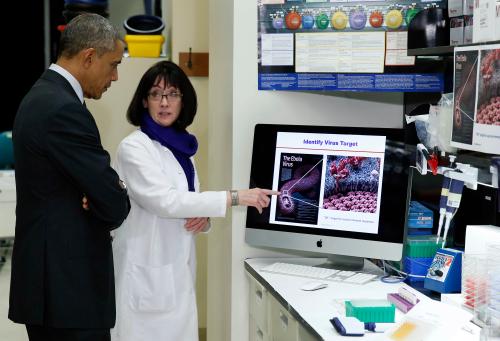More men than women are killed in car crashes each year, partly because men drive more and engage in riskier driving behavior. On the other hand, women are 17% more likely to be killed and 47% more likely to be injured in crashes than men are. Women are at increased risk simply because they are women: cars are primarily designed, built, and tested by male engineers using male data, so they are built with men in mind. Scaled-down versions of male crash test dummies, meant to represent women, were not used until 2003—and are primarily tested in the passenger seat. In car design, development, and testing, male bodies are the standard and female bodies the outlier. This creates a gender data gap with very real impacts on the lives of Americans.
The gender data gap appears in health and medicine, too. Heart disease kills more people in the United States than anything else, accounting for approximately 20% of female deaths and 25% of male deaths. But survival rates for women are substantially worse than they are for men, and the gender data gap is partly to blame. Historically, heart disease research was primarily conducted on male subjects by male scientists and doctors, so male symptoms are considered typical and female symptoms atypical. As a result, women are misdiagnosed up to 50% more often and are more likely to be dismissed without treatment. Even when treated, women are less likely to receive needed medications or advice. And simply including women in research is not enough: when research findings are not sex-disaggregated, men are still considered the norm.[1]
The gender data gap affects military service as well. Retention of women is a perennial, persistent, and well-established problem, but the services have never meaningfully tracked why women leave the military at higher rates. A range of factors—rigid career paths, restrictive policies on parental leave and postpartum fitness, and cultural problems such as the Marines United scandal and high sexual assault rates—are suspected to disproportionately impact women. Yet the primarily-male leadership only recently adopted a recommendation to start tracking retention drivers on a voluntary basis. These efforts will remain inadequate until the scope of analysis is broadened, population pool is increased, and time has passed. Until then, the gap remains robust.
Rethinking the default
The endangerment of American citizens is concerning enough, but the gender data gap also creates a vicious cycle of underrepresentation in leadership across the nation. When leaders are primarily male, they are less likely to consider women as they develop and implement policy. And the policies they enact further neglect women, so the cycle continues. When men become the default, women are an afterthought. Their bodies, needs, and contributions are neglected, and their participation as leaders at every level is limited.
If the male perspective is assumed to be the standard and the female perspective is the “other”, the institutions that rest on that assumption, the decision-making processes leaders employ, and the policy choices that result suffer. This limits government effectiveness, and nowhere is this more critical than in the context of national security. To understand security challenges and develop means to successfully address them, leaders must seek the fullest picture possible. If women are not at the decision-making table and those in command do not consider female perspectives, that picture remains incomplete.
Closing the gap
For this nation to succeed and prosper in the future, the gender data gap must be recognized and it must be narrowed. There are three main steps to accomplish this.
First, research must explore the gender data gap. Instead of considering the average male the norm, gender diversity in research must be actively sought. By exploring how diverse people are affected by various phenomena, research findings can inform government structures, their functions, and the policies that result.
Second, research must explore how diverse teams and leaders impact organizations, particularly in government. The business case for diversity is being established, and research into diversity in other areas is promising: research into diversity in medicine found that female doctors have higher patient survival rates, and male doctors’ performance improved when they worked with female physicians. But the rest of the country must catch up. Research can demonstrate how diversity, particularly gender diversity, affects American lives.
Finally, leaders must actively seek diversity. While the gender data gap is narrowed through research, including the perspectives of those who live in the gap can fill in the blanks. There is precedent for this. United Nations Security Council Resolution 1325, adopted 19 years ago, established that women must be included at all levels of leadership to achieve peace and stability. The United States’ own Women, Peace, and Security Act of 2017 states that “the political participation and leadership of women…is critical to sustaining democratic institutions; and… helps promote more inclusive and democratic societies and is critical to country and regional stability.” For policies to work, institutions to function, and security to last, diverse perspectives must be included.
Until the gender data gap is narrowed, the lack of data, and the underrepresentation of women that feeds and is fed by it, will continue to limit the effectiveness of private, public, and non-profit organizations. But the gender data gap will not close on its own—we must actively seek to close it, the sooner the better. As Malala Yousafzai declared in her 2013 address at the United Nations, “We cannot all succeed when half of us are held back.”
[1] For full discussion of the extent of the gender data gap, see Invisible Women: Data Bias in a World Designed for Men by Caroline Criado Perez.
The Brookings Institution is committed to quality, independence, and impact.
We are supported by a diverse array of funders. In line with our values and policies, each Brookings publication represents the sole views of its author(s).










Commentary
Bridging the gender data gap
November 20, 2019